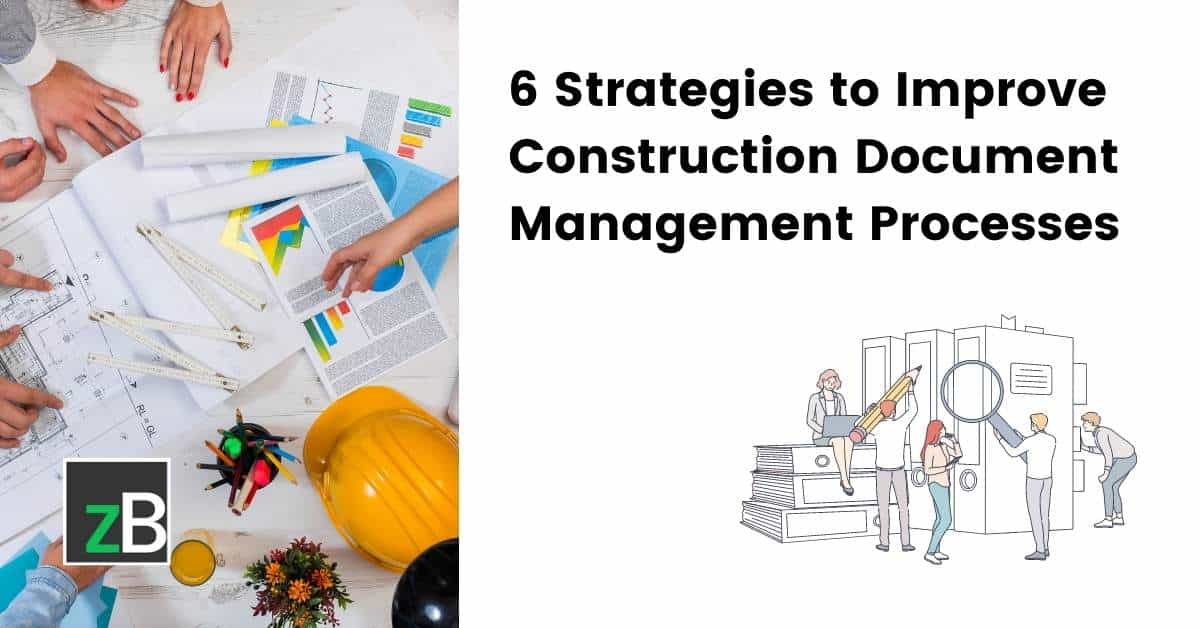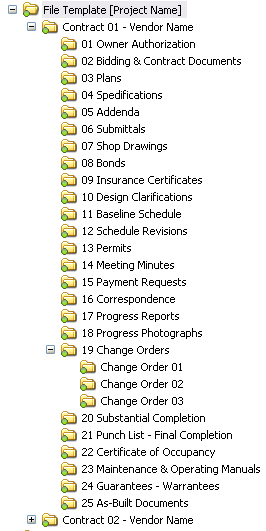Designer's Guide to Simplifying Building Record Management for Reliable Task Execution
In the detailed world of style and building, the reliable management of job documentation stands as a foundation for success. Engineers are tasked with managing a myriad of illustrations, agreements, specifications, and reports, all important parts for bringing a job to fulfillment. Nonetheless, the process of organizing, sharing, and preserving these papers can usually become a maze of inefficiencies and setbacks otherwise handled meticulously. By discovering systematic approaches, innovative tools, and industry best methods, engineers can not only improve their paper administration procedures but additionally lead the way for a lot more effective project execution. Allow's browse through the key approaches and remedies that can reinvent exactly how architects take care of building and construction documentation, ensuring jobs are delivered with accuracy and timeliness.
Value of Effective Document Management
Why is effective record administration critical for engineers in the construction industry? Efficient document monitoring is essential for architects in the building and construction sector as it plays a crucial duty in making certain the effective implementation of jobs. Designers take care of a large range of files, ranging from design drawings and requirements to permits and contracts. Proper organization and management of these files are essential to keep job timelines, guarantee conformity with guidelines, and facilitate reliable interaction amongst task stakeholders.

Reliable record management allows engineers to access critical details promptly, track task progression precisely, and minimize risks linked with errors or omissions. By carrying out streamlined file management processes, engineers can boost partnership with clients, professionals, and other staff member, causing enhanced project outcomes and customer satisfaction.
In addition, reliable document monitoring assists designers keep a comprehensive job history, allowing them to utilize past experiences and lessons discovered for future projects. In today's hectic building and construction industry, where timely decision-making and info sharing are vital, effective paper administration is a foundation for success.
Methods for Enhancing File Organization
Efficient document monitoring techniques not just make sure job success for designers in the building and construction market yet additionally lay the structure for applying techniques for simplifying record organization. To enhance document company effectively, designers should first develop a clear naming convention for folders and files. Uniformity in naming documents based upon project stages, paper kinds, and appropriate information will certainly facilitate very easy retrieval and reduce complication.
Using cloud-based storage space services can additionally enhance paper organization by giving a centralized area for all project-related data - construction document management. This allows employee to access one of the most current documents from anywhere, advertising collaboration and efficiency. Executing version control mechanisms even more refines document organization by tracking changes, preventing clashing edits, and guaranteeing that the most recent versions are always offered
Additionally, producing a sensible folder framework with marked subfolders for different paper classifications, such as illustrations, agreements, and specifications, can streamline file management processes. Consistently reviewing and removing outdated or redundant data will certainly help keep a lean and orderly paper repository, eventually improving productivity and task results.
Leveraging Technology Devices for Partnership
In the realm of contemporary style, engineers are increasingly relying on sophisticated innovation websites devices to cultivate smooth cooperation among job stakeholders. Cloud-based systems such as BIM 360 and Procore enable real-time accessibility to project records, enabling customers, specialists, and designers to work together successfully regardless of their physical place.
Digital layout and construction (VDC) software application like Revit and AutoCAD Design make it possible for architects to produce in-depth 3D versions that can be shared and edited collaboratively. This real-time partnership enhances style control, precision, and visualization, resulting in better decision-making throughout the job lifecycle. In addition, communication devices like Slack and Microsoft Teams give instant messaging, documents sharing, and video clip conferencing capacities, promoting smooth communication amongst team participants and stakeholders.
Guaranteeing Precision and Version Control

Efficient variation control likewise aids in handling record approvals and ensuring that only accredited workers make modifications. their website Designers should develop clear protocols for documenting changes, including timestamps and user recognition, to create an audit path for accountability. Consistently interacting with the task team regarding variation updates and modifications is essential to prevent complication and maintain positioning throughout the building and construction process.
Finest Practices for Record Sharing and Access
Having actually established a robust system for variation control in building and construction record administration, engineers can currently focus on maximizing document sharing and accessibility approaches to boost collaboration and effectiveness amongst project stakeholders. These platforms provide real-time access to project files, allowing group participants to watch, edit, and comment on documents simultaneously.
Moreover, applying role-based access control is vital for preserving information security while facilitating collaboration. Appointing various authorization levels to staff member makes sure that delicate details is just obtainable to authorized personnel. On a regular basis updating access approvals based upon project needs and team changes is critical for preserving data honesty.
Incorporating project monitoring software program with file sharing platforms can additionally enhance workflows. This assimilation permits seamless interaction, task tracking, and record administration within a single user interface, reducing the need to switch between multiple devices. By following these best techniques, engineers can develop a more efficient and collective record sharing environment, ultimately causing successful project implementation.

Final Thought
Finally, reliable building document monitoring is critical for effective project implementation. By applying methods for organization, leveraging technology devices for cooperation, making sure accuracy and variation control, in addition to following ideal methods for document sharing and accessibility, designers can improve their operations and enhance overall task effectiveness. Prioritizing these facets of file management will certainly result in smoother task implementation and description better end results for all stakeholders involved.
Reliable file monitoring is necessary for architects in the building and construction market as it plays a critical duty in guaranteeing the successful implementation of projects. construction document management. Appropriate organization and monitoring of these files are vital to maintain project timelines, make sure compliance with regulations, and promote effective communication among job stakeholders
Efficient record management methods not just guarantee project success for designers in the building and construction industry but likewise lay the structure for implementing techniques for enhancing record organization. One essential method is developing a central document repository where all team members can access the most current variations of illustrations, requirements, and other project files.Having actually developed a robust system for version control in building paper monitoring, architects can now concentrate on maximizing document sharing and accessibility techniques to boost collaboration and effectiveness amongst job stakeholders.